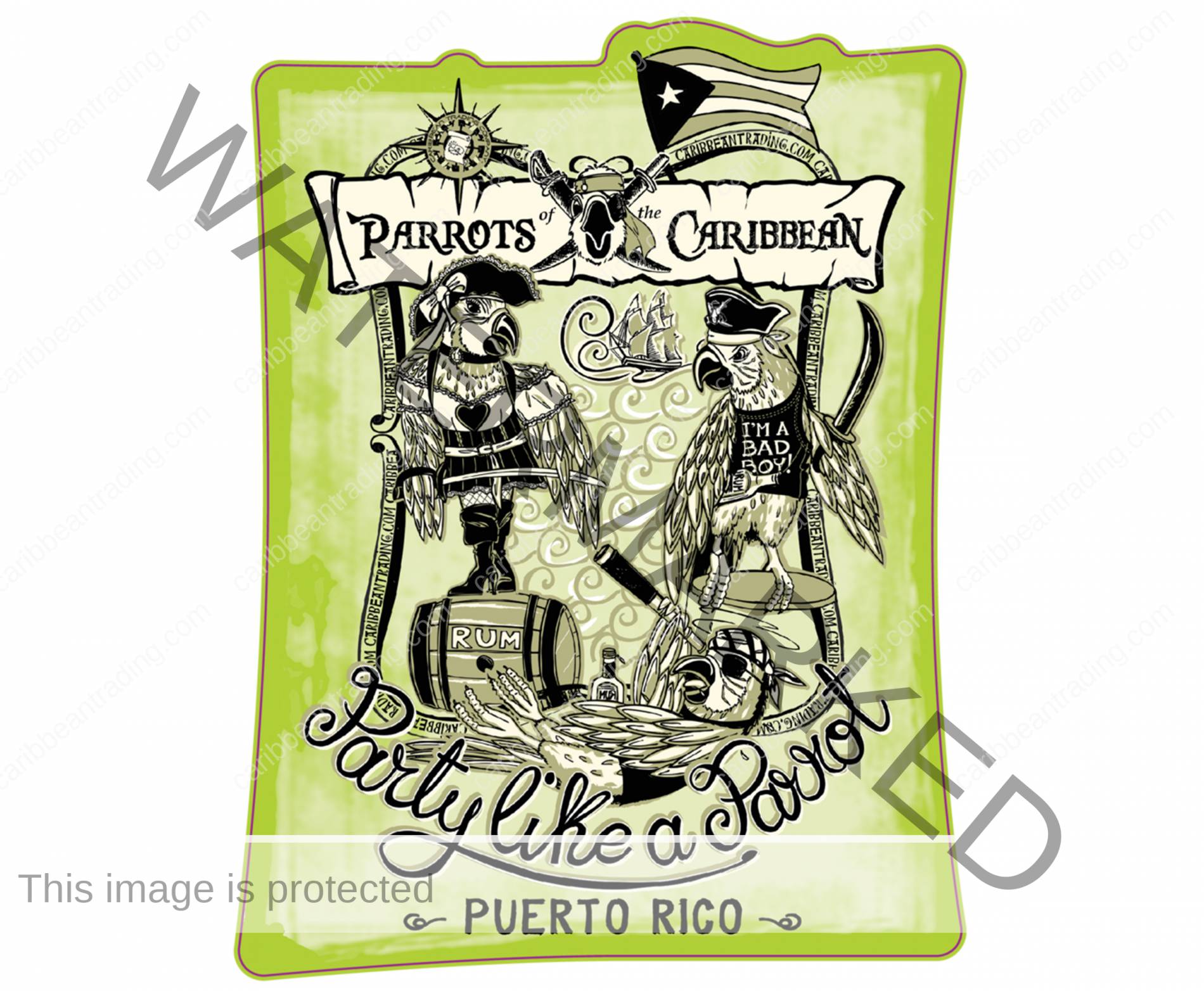Puerto Rico
The Evolution of Caribbean Pirate Legends
The Caribbean has long been romanticized as the home of swashbuckling pirates, hidden treasures, and grand adventures on the high seas. The enduring fascination with pirates stems largely from centuries of storytelling, folklore, and historical accounts that have shaped how we perceive the golden age of piracy. But how did these legends evolve, and why do they remain such a pervasive part of popular culture? To understand the development of Caribbean pirate legends, we must delve into the historical context, examine the role of literature and oral tradition, and explore the modern reinterpretations of pirate mythology.
The Historical Roots of Caribbean Piracy
The so-called “Golden Age of Piracy” spanned roughly from the late 17th century to the early 18th century, coinciding with the European colonization of the Americas. The Caribbean was a prime location for piracy due to its geography and trade routes. Its numerous islands, hidden coves, and proximity to major shipping lanes made it an ideal base of operations for pirates seeking to plunder ships carrying goods such as sugar, tobacco, spices, and gold.
During this period, European powers, including Spain, England, France, and the Netherlands, vied for control of the New World. Privateers, who were essentially government-sanctioned pirates, were employed by these nations to attack enemy ships and settlements. However, when peace treaties ended official sponsorship, many privateers turned to piracy full-time. Figures such as Edward Teach, better known as Blackbeard, and Bartholomew Roberts became infamous for their daring raids and brutal tactics, earning a place in history as some of the most notorious pirates of the era.
These real-life pirates, despite their criminality, became larger-than-life figures. Their exploits were often exaggerated, with tales of buried treasure, secret maps, and curses adding a layer of mystique to their already infamous reputations. The allure of independence, rebellion against authority, and the promise of untold riches contributed to the romanticization of piracy in the Caribbean.
The Role of Oral Tradition and Early Literature
The legends of Caribbean pirates owe much to the oral traditions of sailors, traders, and coastal communities. Stories of pirate attacks, daring escapes, and hidden loot were passed down through generations, often embellished with each retelling. These oral accounts served as both warnings and entertainment, blending elements of truth with fantastical details that captured the imagination of listeners.
The written word played a pivotal role in cementing pirate legends. One of the earliest and most influential works was A General History of the Pyrates (1724), attributed to Captain Charles Johnson, a likely pseudonym. This book provided detailed biographies of famous pirates, including Blackbeard, Calico Jack, and Anne Bonny, blending historical fact with fiction. Johnson’s work not only introduced many of the tropes associated with pirates—such as the Jolly Roger flag, buried treasure, and the charismatic yet ruthless pirate captain—but also shaped the public’s perception of piracy for centuries.
The influence of Johnson’s book can be seen in later literary works, including Robert Louis Stevenson’s Treasure Island (1883). Stevenson’s novel introduced the archetype of the one-legged pirate with a parrot on his shoulder—Long John Silver—and popularized the notion of treasure maps marked with an “X.” These elements, though largely fictional, became synonymous with pirate lore and have been perpetuated in countless adaptations and reinterpretations.
Pirates in Popular Culture
The 20th and 21st centuries have seen a resurgence of interest in Caribbean pirate legends, driven by films, books, and other forms of media. Hollywood has played a significant role in shaping modern perceptions of pirates, often blending historical elements with fantasy and adventure. Early films such as Captain Blood (1935) and The Sea Hawk (1940) set the stage for swashbuckling heroes and epic sea battles, while more recent productions like the Pirates of the Caribbean franchise have introduced new generations to the world of pirate mythology.
The success of Pirates of the Caribbean highlights the enduring appeal of pirate legends. The films combine elements of historical piracy with supernatural themes, such as cursed gold and ghost ships, drawing on the rich tapestry of folklore and fiction that has grown around Caribbean piracy. Characters like Captain Jack Sparrow, with his flamboyant personality and moral ambiguity, reflect the complex and contradictory nature of pirate legends: both villains and heroes, outlaws and adventurers.
Beyond film, pirate legends have permeated other aspects of popular culture, from video games to theme park attractions. The romanticized image of pirates as free-spirited rebels continues to captivate audiences, offering an escape from the constraints of modern life and a glimpse into a world of adventure and possibility. You can also find pirate-themed stickers at our store from Caribbean Trading!
Don’t forget that if you want to feel like a real pirate, you can always sail the seas with boat services such as a charter yachts bvi, offering you everything you need to enjoy the beautiful landscape!
The Myth vs. Reality of Pirate Life
While the legends of Caribbean pirates paint a picture of daring adventurers living free on the high seas, the reality was far less glamorous. Pirates lived harsh and dangerous lives, often plagued by disease, starvation, and violence. Ships were cramped and unsanitary, and battles could be brutal and deadly. The pursuit of treasure was not as common as the stories suggest; most pirate raids targeted practical goods such as food, clothing, and weapons rather than gold or jewels.
The democratic nature of pirate crews, however, contributed to their legendary status. Unlike the rigid hierarchies of naval or merchant ships, pirate crews operated on a more egalitarian basis. Captains were elected by the crew, and loot was divided according to agreed-upon shares. This sense of equality and rebellion against oppressive authority resonated with many, fueling the romantic image of pirates as symbols of freedom and defiance.
The harshness of pirate life and the eventual decline of piracy in the Caribbean were also shaped by historical events. The rise of powerful navies, changes in trade routes, and the establishment of colonial governments made piracy increasingly difficult. By the mid-18th century, the golden age of piracy had largely come to an end, but its legends continued to thrive.
The Cultural Legacy of Pirate Legends
The evolution of Caribbean pirate legends is not just a tale of storytelling but also a reflection of cultural values and historical realities. Pirates have come to symbolize a range of ideas, from individual freedom and rebellion to greed and lawlessness. Their stories serve as a lens through which we explore themes of morality, power, and the human desire for adventure.
In many ways, the legends of Caribbean pirates have become a global phenomenon, transcending their historical roots to take on new meanings in different cultural contexts. For some, they represent a critique of colonialism and imperialism, highlighting the exploitation and violence of the age. For others, they embody a spirit of resilience and resourcefulness in the face of adversity.
The continued fascination with pirates also speaks to the enduring power of storytelling. Whether through oral tradition, literature, or modern media, the legends of Caribbean pirates have been shaped and reshaped over centuries, adapting to the changing needs and interests of audiences. They remind us of the ways in which history and myth intertwine, creating narratives that both reflect and shape our understanding of the past.
Conclusion
The evolution of Caribbean pirate legends is a testament to the enduring appeal of adventure, rebellion, and mystery. From the historical exploits of real pirates to the embellished tales of oral tradition and literature, these legends have captured the imagination of people around the world. They have been shaped by historical events, cultural values, and the creative minds of storytellers, evolving into a rich and multifaceted mythology that continues to inspire and entertain.
While the reality of pirate life was often grim, the legends of Caribbean pirates offer a glimpse into a world of possibility and adventure. They challenge us to question authority, imagine new ways of living, and embrace the unknown. In a world that often feels constrained by rules and expectations, the enduring allure of pirate legends lies in their promise of freedom and the chance to carve out one’s own destiny on the high seas.







